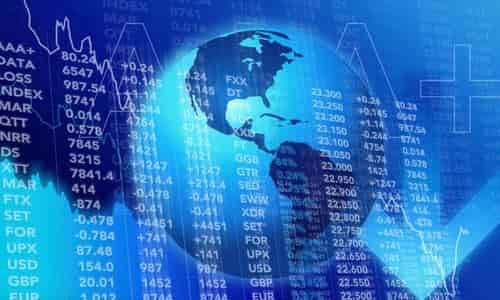Is A Great Crash Coming? The Laws Of Economics Cannot Be Defied Forever
 By Michael Snyder/Economic Collapse Blog March 01, 2017
Share this article:
By Michael Snyder/Economic Collapse Blog March 01, 2017
Share this article:
Current stock market valuations are not sustainable. If there is
one thing that I want you to remember from this article, it is that
cold, hard fact.
In 1929, 2000 and 2008, stock prices soared to absolutely absurd levels just before horrible stock market crashes.
What goes up must eventually come down, and the stock market bubble of today will be no exception.
In fact, virtually everyone in the financial community acknowledges that stock prices are irrationally high right now.
Some
are suggesting that there is still time to jump in and make money
before the crash comes, while others are recommending a much more
cautious approach.
But what almost everyone agrees on is the fact that stocks cannot go up like this forever.
On
Tuesday, the Dow, the S&P 500 and the Nasdaq all set brand new
record highs once again. Overall, U.S. stocks are now up more than 10
percent since the election, and this is probably the greatest
post-election stock market rally in our entire history.
But
stocks were already tremendously overvalued before the election, and at
this point stock prices have reached a level of ridiculousness only
matched a couple of times before in the past 100 years.
Only
the most extreme optimists will try to tell you that stock prices can
stay this disconnected from economic reality indefinitely.
We
are in the midst of one of the most outrageous stock market bubbles of
all time, and as MarketWatch has noted, all stock market bubbles
eventually burst...
The U.S. stock market at this level reflects a
combination of great demand, great complacency, and great greed. Stocks
are clearly in a bubble, and like all bubbles, this one is about to
burst.
If corporations were making tremendous amounts of money, rapidly rising stock prices would make logical sense.
But
that is not the case at all. Corporate earnings for the fourth quarter
of 2016 were actually quite dismal, and this disconnect between Wall
Street and economic reality is starting to really bug financial analysts
such as Brian Sozzi...
The S&P 500 has
gone 89 straight sessions without a 1% decline. Considering that
Corporate America didn't exactly light up on the top and bottom lines
during the fourth quarter, such a streak is rather troublesome.
Granted,
the stock market is a forward-looking mechanism that appears to be
trading on hopes that Trump's unannounced stimulus and tax plans will be
lifting economic growth in 2018.
Even
so, the inability of investors to at least acknowledge persistent
struggles among companies and ongoing chaos in Washington is starting to
become disturbing.
It is a basic fact of economics that stock prices should accurately reflect current and future earnings.
So
if corporate earnings are at the same level they were at in 2011, why
has the S&P 500 risen by 87 percent since then? The following comes
from Wolf Richter...
The S&P 500 stock
index edged up to an all-time high of 2,351 on Friday. Total market
capitalization of the companies in the index exceeds $20 trillion.
That's 106% of US GDP, for just 500 companies! At the end of 2011, the
S&P 500 index was at 1,257. Over the five-plus years since then, it
has ballooned by 87%!
These are
superlative numbers, and you'd expect superlative earnings performance
from these companies. Turns out, reality is not that cooperative.
Instead, net income of the S&P 500 companies is now back where it first had been at the end of 2011.
The
cyclically adjusted price-to-earnings ratio was originally created by
author Robert Shiller, and it is widely regarded as one of the best
measures of the true value of stocks in existence.
According to the Guardian, there have only been two times in our entire history when this ratio has been higher.
One was just before the stock market crash of 1929, and the other was just before the bursting of the dotcom bubble...
Traditionally,
one of the best yardsticks for whether shares are over-valued or
under-valued has been the cyclically adjusted price earnings ratio
constructed by the economist Robert Shiller.
This
ratio is currently at about 29 and has only twice been higher: in 1929
ahead of the Wall Street Crash, and in the last frantic months of the
dotcom bubble of the late 1990s.
We can
definitely wish for the current euphoria on Wall Street to last for as
long as possible, but let there be absolutely no doubt that it is going
to end at some point.
It would take a market
decline of 40 or 50 percent to get the cyclically adjusted
price-to-earnings ratio back to a level that makes economic sense.
Let
us hope that the market does not make such a violent move very rapidly,
because that would likely be absolutely crippling for our financial
system.
Markets tend to go down a lot faster
than they go up, and every other major stock market bubble in U.S.
history has ended very badly.
And this bubble
is definitely overdue to burst. The bull market that led up to the
great crash of 1929 lasted for 2002 days, and this week the current bull
market will finally exceed that record.
Trying
to pick a specific date for a market crash is typically a fruitless
exercise, but market watchers are becoming very concerned about some of
the signs that we are now seeing.
For example, the "CCT indicator" is currently showing "the lowest bullish energy ever"...
The
first factor is the CCT indicator. This indicator is a proprietary
internal measurement of the general volume of the New York Stock
Exchange.
The measurements take
into account the institutional participation as a ratio of the overall
volume. Also measured is the duration of heavy block buying in rallies.
The
sum total of all the measurements now shows the lowest bullish energy
ever -- even lower than in 2008, just before the market crash.
In other words, this current bull market appears to be completely and utterly exhausted.
The
laws of economics cannot be defied forever. Traditionally, commodity
prices and stock prices have tended to move in unison.
And
this makes perfect sense, because commodity prices tend to rise when
economic conditions are good, and in such an environment stock prices
are typically going to move up.
But now we are in a time when commodity prices and stock prices have become completely disconnected.
In
order to bring this ratio back into line, the S&P 500 would need to
fall by about 1000 points, and such a decline would cause a level of
financial chaos that would be absolutely unprecedented.
This
current stock market bubble has lasted much longer than many of the
experts originally anticipated, but that just means that the eventual
crash will likely be that much more devastating.
In the end, you don't need to know all of the technical details in this article.
But what you do need to know is that current stock market valuations are not sustainable and that a great crash is coming.
It
may not happen next week or next month, but it is going to happen. And
when it does happen, it is likely to make what happened in 2008 look
like a Sunday picnic.

No comments:
Post a Comment